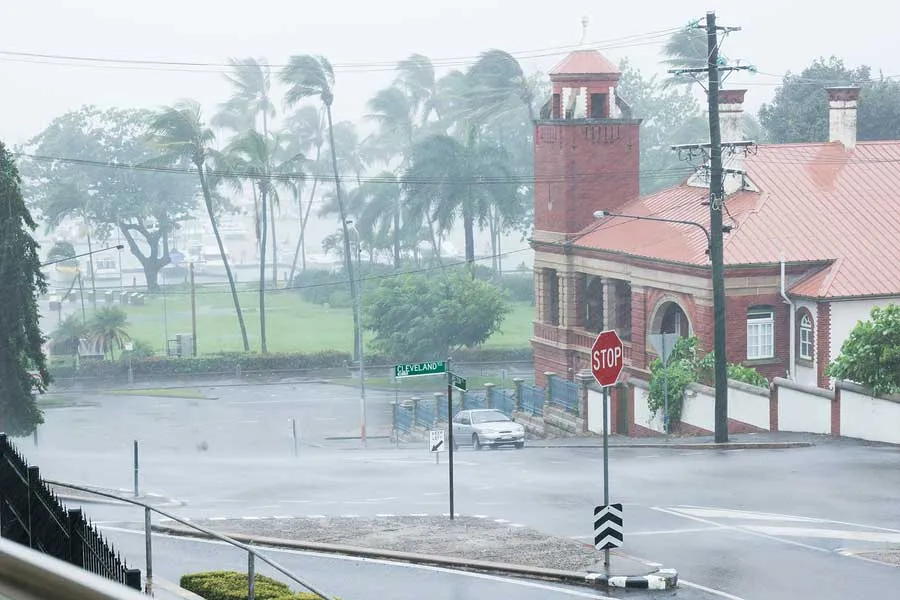Not every country experiences the same seasons, and even if they do they might experience them during different times of the year. In places like the United States, there are four seasons where each lasts roughly three months long. In other prices like Indonesia, they have only two seasons: the hot and rainy seasons. Taiwan has three seasons: hot, rainy, and typhoon season! Seasons and their times depend on whether the country is located in the northern or southern hemisphere and how close they are to the equator.
But what exactly is the reason for the season changes? Is there an old-man nature that blows hot air in the summer and cold breezes in the winter? The answer is much less fun but just as interesting. It’s because the Earth spins on its axle. Our planet’s axle isn’t totally upright (90°). Due to the number of collisions over the history and creation of Earth, it is tilted at an angle of 23.5°. This axial tilt is referred to as obliquity.
Over the course of a year, the angle does not change. The northern axis is always pointed towards the same direction in space, more or less towards Polaris. Because of this tilt, each time the Earth makes its annual lap around the sun, different areas of the planet receive more or less direct sunlight during the daytime. The tilt also affects how much daily sunlight each country receives. Without the tilt, each area of the planet would receive have a constant 12 hour days and 12 hour nights.
In short, the earth’s obliquity causes some countries on Earth to receive more direct sunlight during certain times in a year, and receive less sunlight in other times. This is the cause of the different seasons in different areas of the planet (when it’s spring in the northern hemisphere, it’s fall in the southern hemisphere). Let’s take a look at the different seasons which countries on Earth experience.
Spring
This is one of the four conventional seasons coming right after winter and before summer. Countries just coming out of the winter season and entering the spring season will have slushy, mud-filled snow which is rapidly melting due to the increase in temperature.  As the months go on, any residual snow banks will melt completely, and there will be increasingly more light drizzles. This signals the blooming of beautiful flowers the re-growing of leaves on trees. Birds that make their annual migration to southern areas of the planet will return home as the weather becomes warmer, bees will wake from their hibernation and begin to collect pollen, and allergy-suffering humans will want to remain inside with a box of tissues and allergy medicine. Students in the northern hemisphere usually have a one-week break to enjoy the fully-formed warmth of this season.
As the months go on, any residual snow banks will melt completely, and there will be increasingly more light drizzles. This signals the blooming of beautiful flowers the re-growing of leaves on trees. Birds that make their annual migration to southern areas of the planet will return home as the weather becomes warmer, bees will wake from their hibernation and begin to collect pollen, and allergy-suffering humans will want to remain inside with a box of tissues and allergy medicine. Students in the northern hemisphere usually have a one-week break to enjoy the fully-formed warmth of this season.
Summer
During summer months, the earth’s axis causes certain areas of the planet to become more exposed to the Sun’s sunlight. During this season, the weather becomes warmer and increasingly humid, days become longer and nights shorter, and people plans for trips out of town to beaches or lakes. Rain will become less frequent or even stop during these hot months. Countries closer to the equator will experience scorching hot temperatures (the hottest recorded temperature in Victoria, Australia, reached 120°F during summer 2009). In the northern hemisphere, schools and universities usually have break during the whole three-month season to let their students enjoy the warm weather.
Fall/Autumn
Depending on where you live in the world, you may the season coming right after summer as either fall or autumn. This season begins with warm temperatures (coming right out of summer) which will decrease gradually over the following months. The leaves on trees will begin to fall (hence the name), animals will begin to look for food to last them for the whole winter months while they’re huddled safely in their dens during hibernation, and the birds will begin their trip back to warmer southern temperatures. Snowfall is rare during this season, but temperatures can drop to around 57°F. In northern hemispheres, schools and universities resume operations after a three-month break during the summer season.
Winter
In the northern hemisphere, winter signals the end the old year and begins the new one. Temperatures drop to below 47°F and snow will begin to fall; slowly at first but then gain momentum as the months pass by.

Depending on where you are on Earth, you can experience as little as 1 inch to up to an overwhelming 11 feet of snow throughout the season. Though the view can be extremely beautiful, it’s advised that people take a thick coat and hat when leaving their warm homes to prevent frostbite. In the northern hemisphere, this snowy season coincides with Hanukkah, Christmas and New Year. Students in schools and universities are given a two-week break to enjoy the long holidays.
Tropical cyclone season
Certain coastal countries and states can experience an annual stormy season which can be potentially dangerous. During these months, cyclones form in deep in the ocean and travel westward towards land. Once again, depending on where you are in the country, typhoon season

might not affect you, or you may be right in the hurricanes line of sight. In places like Taiwan and Hong Kong, cyclone season can cause insurmountable damages and loss of life. Schools and universities in the aforementioned countries are usually closed during bad spells in the season.
Rainy season
Similar to spring, countries going through a rainy season will experience rain. Unlike spring, these rain showers are unrelenting and countries like Indonesia can drown below 6 feet of rain during this season. This season can be an incredible inconvenience since flights coming in and out of the country are either delayed or cancelled. Businesses either have to board up their windows and doors to prevent muddy waters entering their premises or evacuate altogether. Depending on the severity of the rain and floods, schools can either continue their regular schedule or send their students on break to deal with the floods in the comfort of their own homes.

